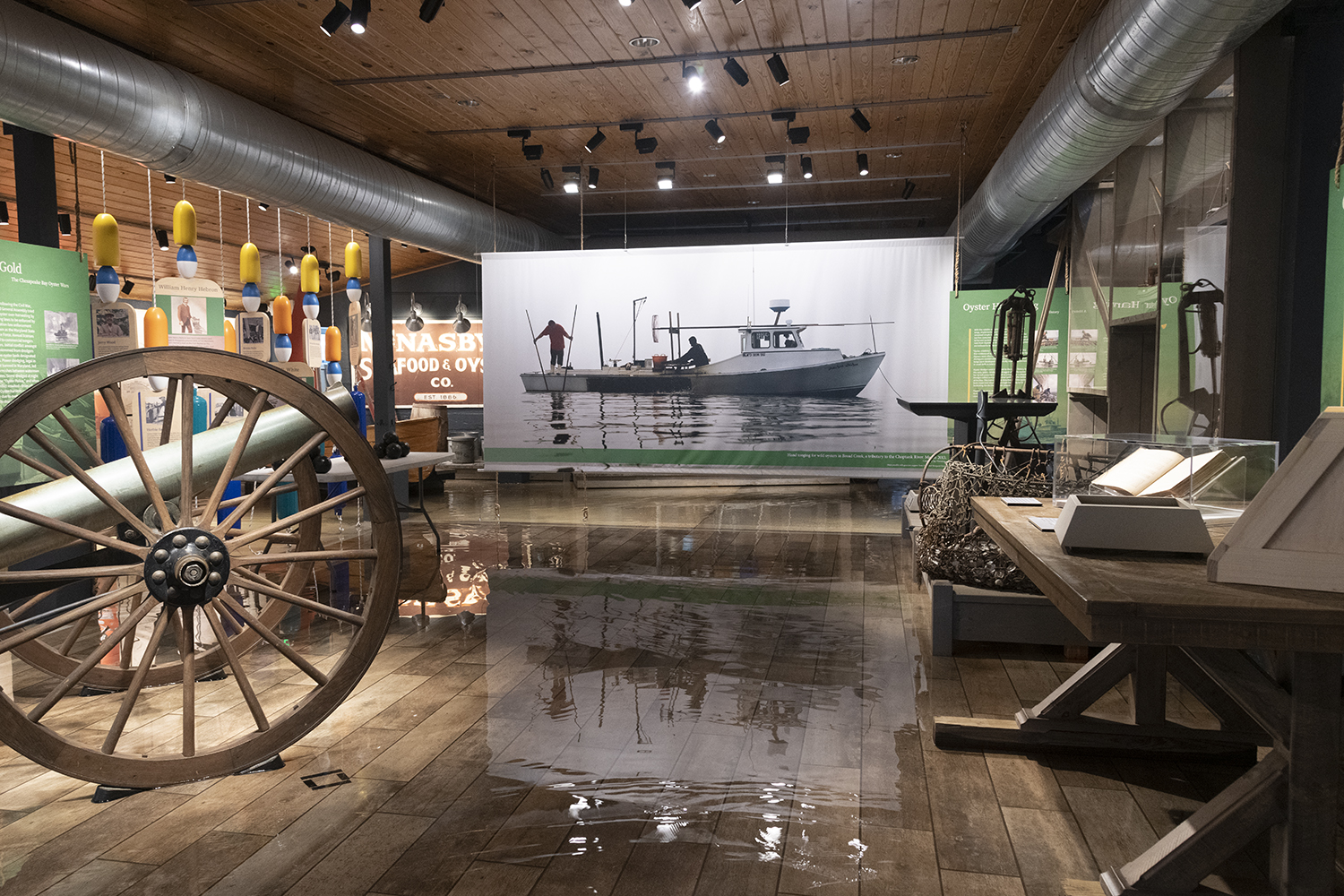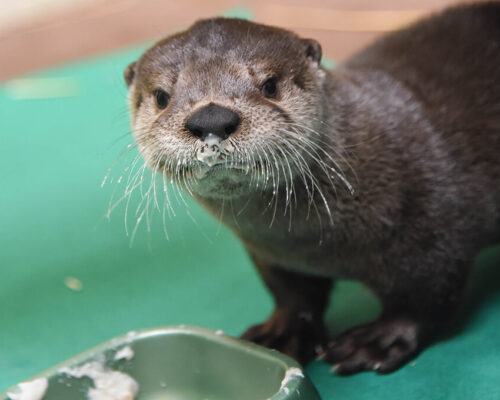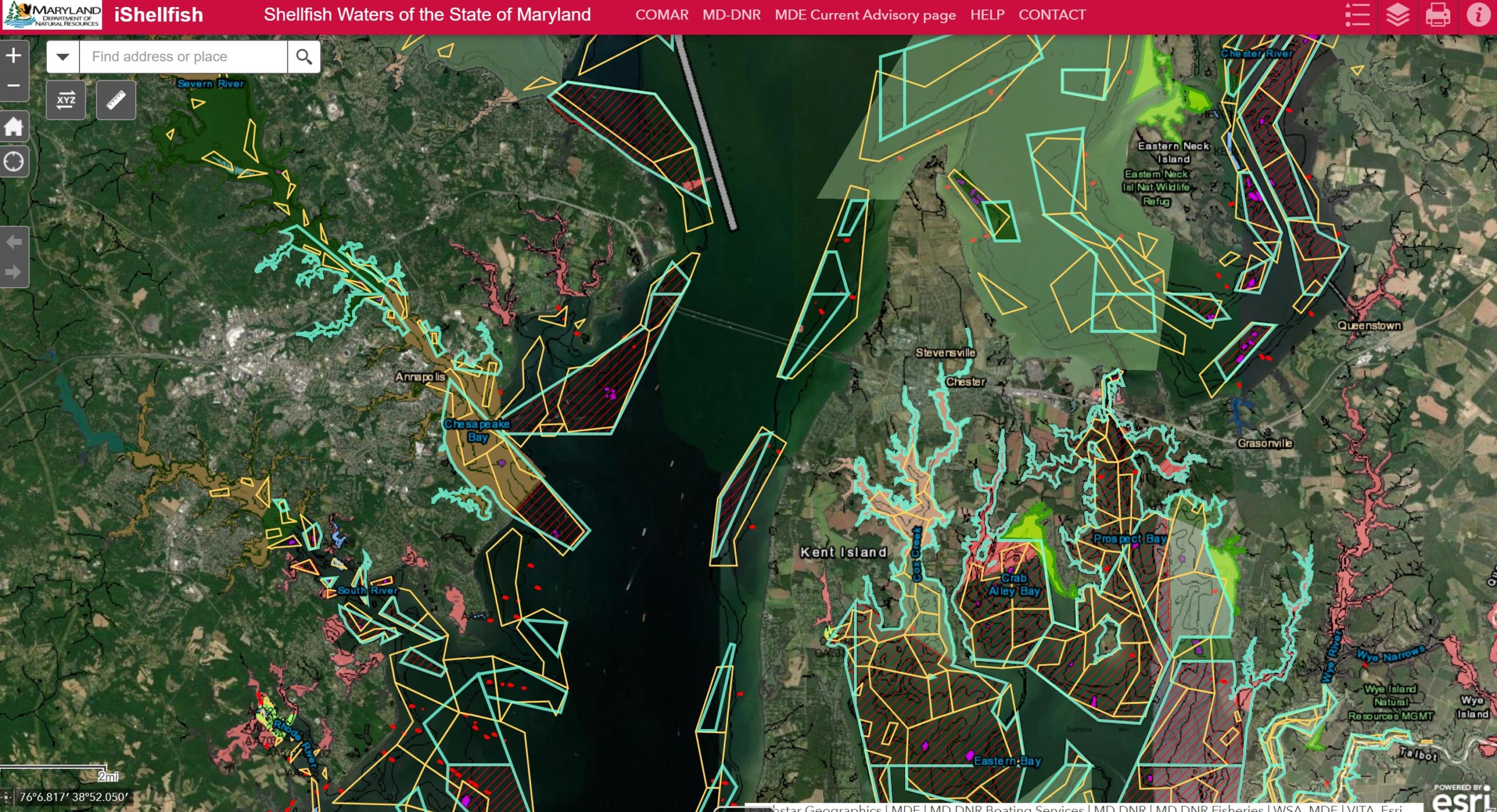Nearly 12 tons of concrete are now sitting on the bottom of Herring Bay, just waiting to become a condominium for Chesapeake Bay oysters and other critters.
78 concrete oyster “reef balls”, or domes of concrete with holes throughout them, were lowered into the water by crane off the coast of Chesapeake Beach. They serve to expand the Maryland Artificial Reef Initiative site in Herring Bay’s oyster sanctuary.
The Chesapeake Bay Foundation and Coastal Conservation Association Maryland (CCA) partnered with the Maryland Department of Natural Resources, the Chesapeake Beach Oyster Cultivation society and the Town of Chesapeake Beach to plant the reef balls about two miles offshore. Now in place, the concrete structures become habitat for oysters to attach to and hiding places for fish, crabs and other species.
Each 300-pound reef ball was already set with oyster spat (juvenile oysters raised in captivity).
Bay Bulletin captured photos of the mucky, heavy lifting it took to deploy the reef balls. Click through the images below:
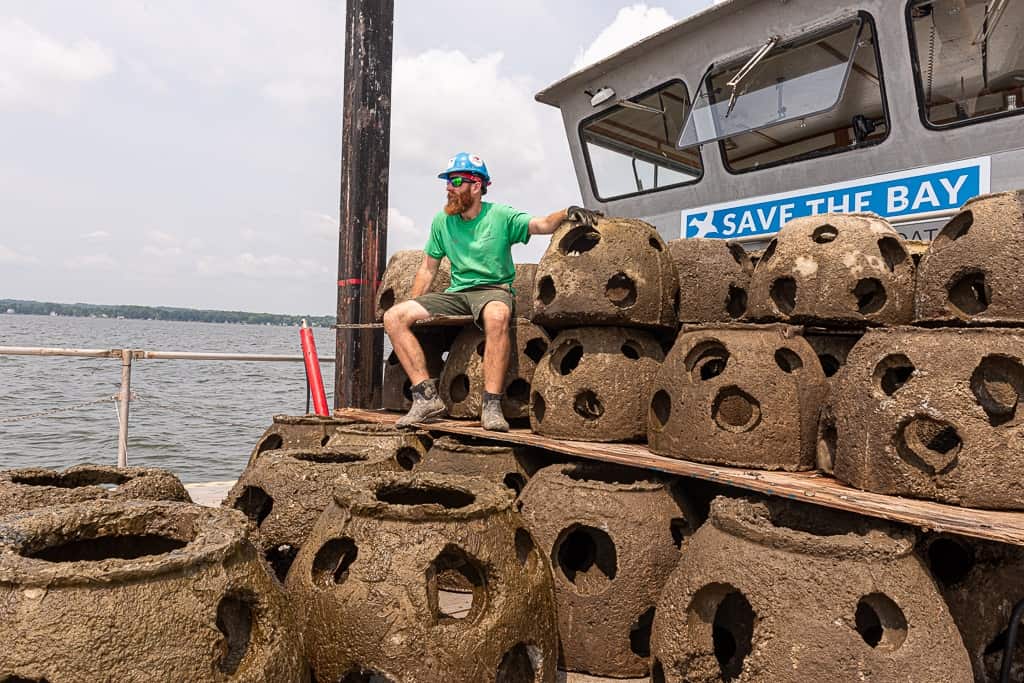
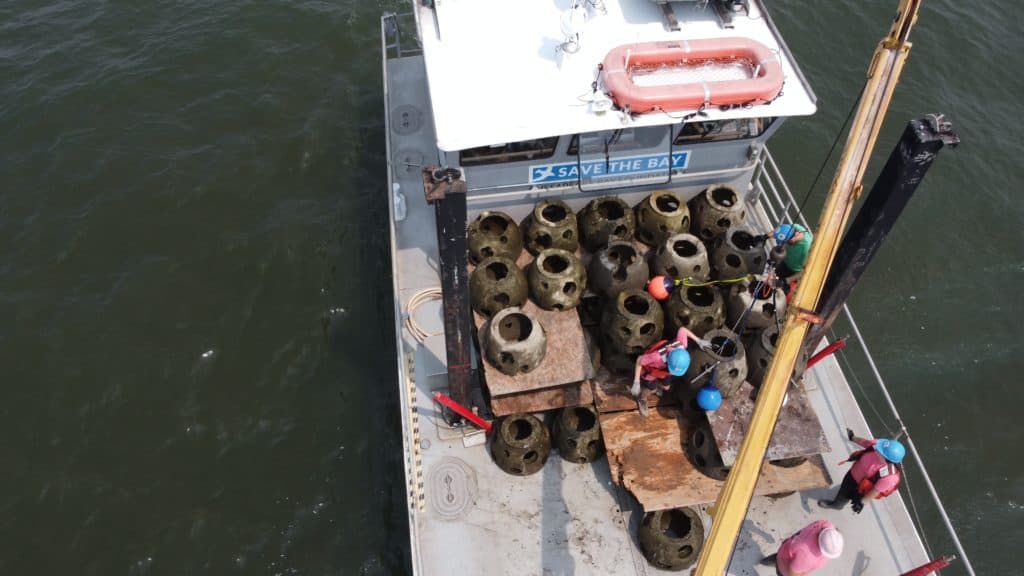
Aerial view of reef balls ready to be deployed, courtesy of CBF 
The massive reef balls are lowered by crane. 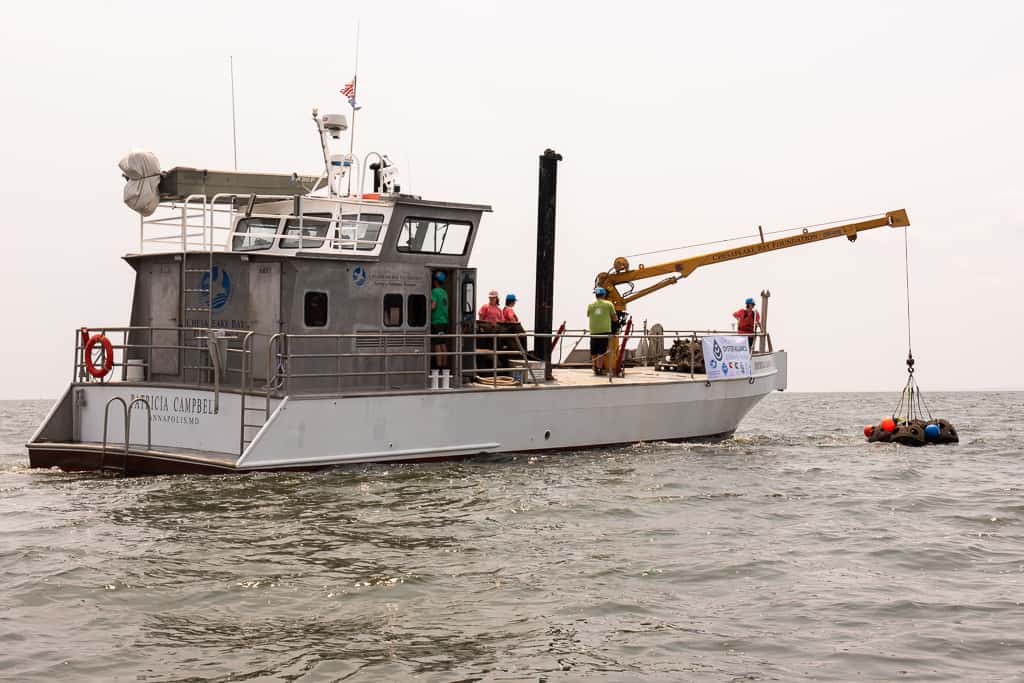
CBF’s Patricia Campbell is heavy-duty enough to handle the concrete balls. 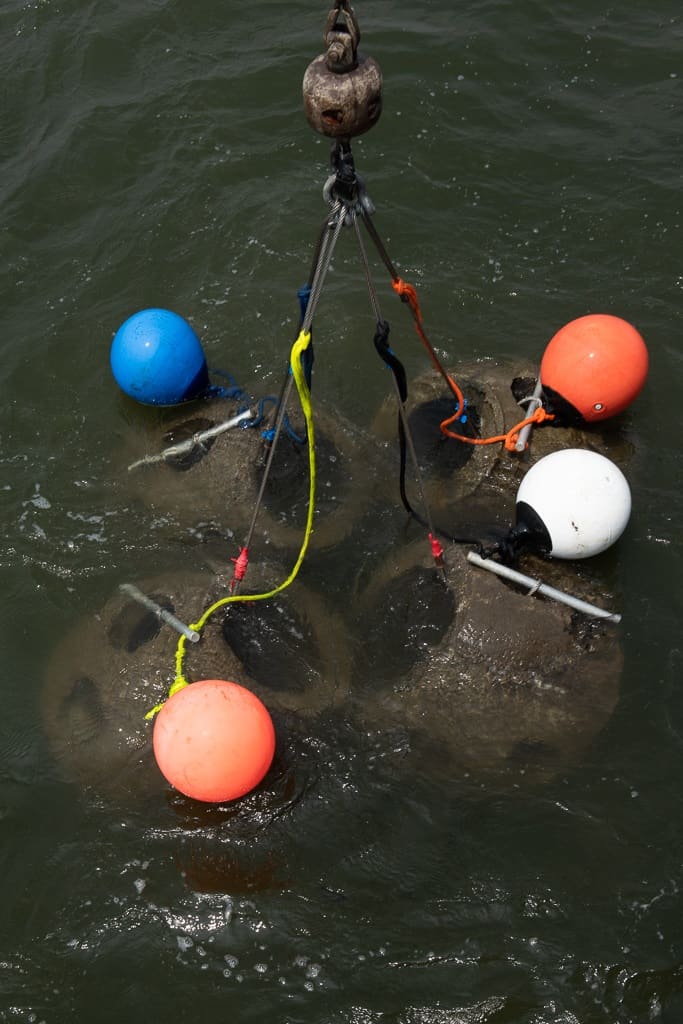
300-pound reef balls gently go into the water. 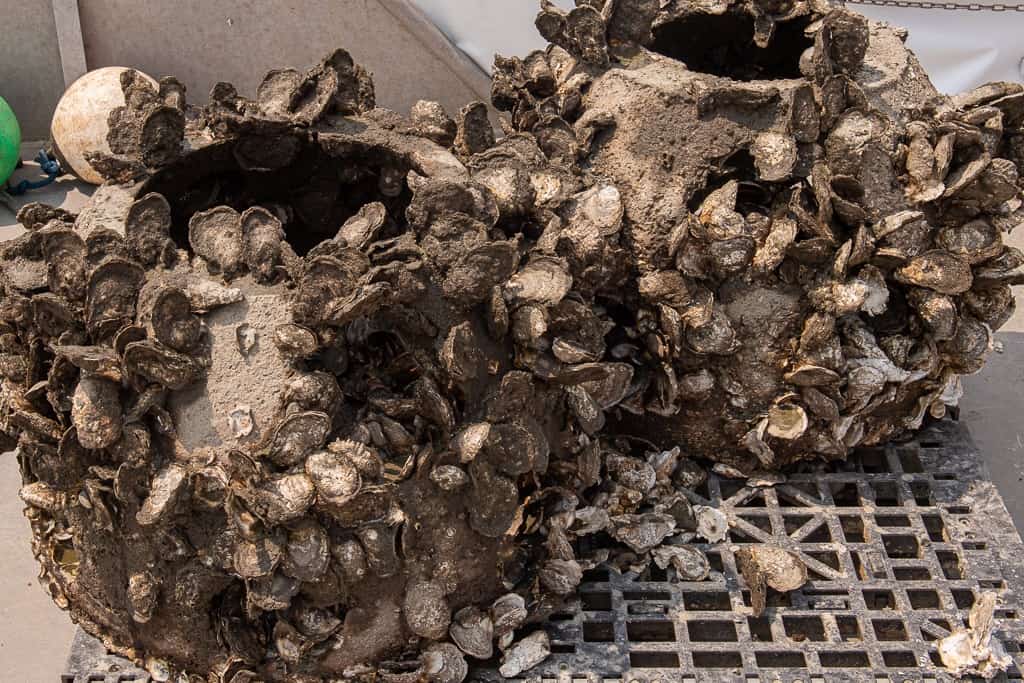
An example of 4-year-old reef balls have been growing oyster around 4 years, showing what the habitat eventually looks like.
With the newly installed oyster reef, partner organizations aim to improve water quality (thanks to oysters’ water-filtering power) and create new fishing opportunities for anglers. Species like spot, silver perch, shrimp, and crabs like to hang out in oyster reefs, which in turn attract fish like striped bass, croaker, and speckled trout, among others.
“Throughout Maryland we’re supporting efforts to increase recreational fishing opportunities and that means adding more fish habitat,” said David Sikorski, Executive Director of CCA Maryland, which advocates for healthy coastal fisheries. “Maryland anglers know the value of oyster reefs, so we’re happy to support this project and others that help oysters rebuild reefs after decades of habitat decline.”
Chesapeake Bay Foundation scientists say reef balls help replace the disappearing oyster reefs in the Bay, giving oyster recovery a fighting chance.
“They emulate the reef structure of an undisturbed oyster reef that builds higher in the water column over time through generations of oyster spawning and growth,” explains CBF Maryland Senior Fisheries Scientist Allison Colden.
The oyster spat attached to these concrete balls count towards the goal of adding 10 billion oysters to the Bay by 2025. This targeted project is one of several smaler-scale oyster restoration efforts CBF and other partners are working on, including some in the Annapolis area.
–Meg Walburn Viviano


